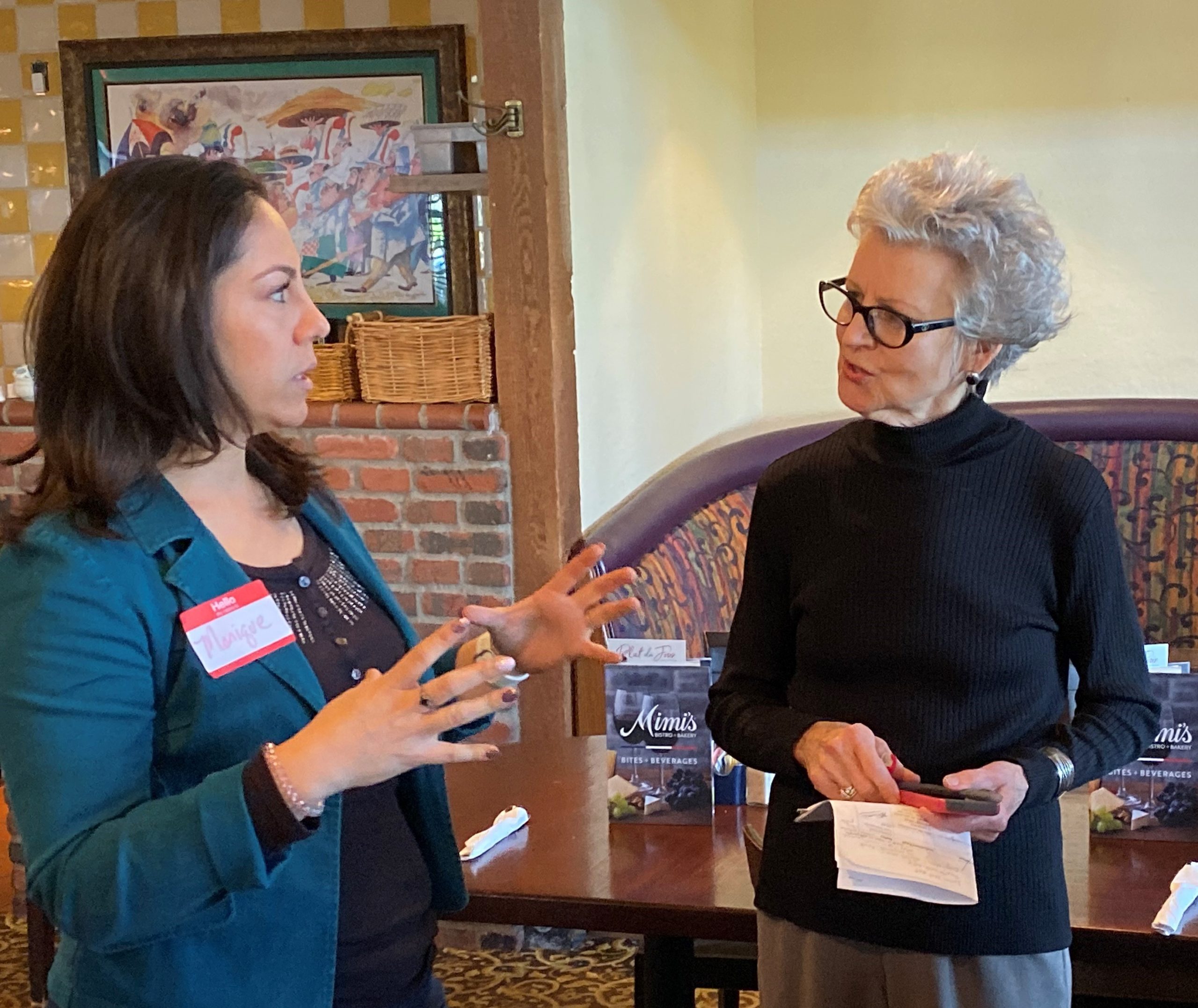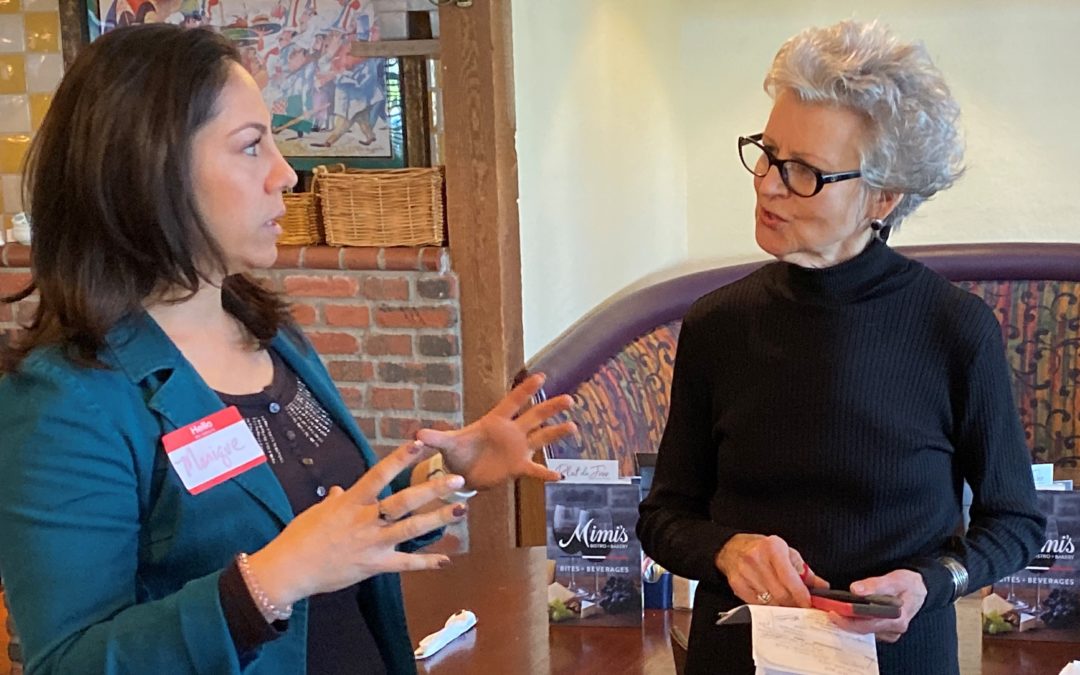
On Valentine’s Day, 20 women communicators juggled bowls of oatmeal and cinnamon rolls to experiment with tools that can be used to transform meetings into fun, productive problem-solving sessions.
According to the Harvard Business Review, 90% of the people at your last meeting are daydreaming. Seventy-three percent are doing other work. Smart leaders (regardless of their title) experiment with energizing their meetings and fight the inertia that defaults to the norm.
As WCA member, mentor and attention management expert Maura Nevel Thomas advises, “If you’re a leader, I encourage you to collaborate with other managers to take a fresh look at how you handle meetings.”
Harnessing the collective problem solver
When shared ideas and approaches are focused and directed at an articulated purpose, meetings become the secret sauce, the can of spinach Popeye pops open to defeat his arch-nemesis, the bully Brutus. They are transformed into what the New York Times columnist David Brooks recently described as “gatherings” where:
“…traits (like): open-mindedness, flexibility, listening skills, team-building skills and basic human warmth. In this saga, leaders are measured by their ability to expand relationships, not wall them off.”
Too blue sky? Maybe not.
Too much control or too little structure?
The answer to the meeting conundrum lies somewhere between fluidity and control, neither so tightly orchestrated the meeting’s structure sucks the spontaneity out of the discussion, nor so loose it degenerates into interminable chaos.
At our Careers Over Coffee session, we experimented with a toolset called Liberating Structures; simple exercises that source both spontaneity and structure from 10 basic principles:
- Never start without a clear purpose
- Practice deep respect for people and local solutions
- Include and unleash everyone (each person is given equal time)
- Build trust as you go
- Learn by failing forward
- Practice self-discovery within a group
- Amplify freedom and responsibility
- Emphasize possibilities: believe before you see
- Invite creative destruction to make space for innovation
- Engage in seriously playful curiosity
What we did: an early-morning example, with oatmeal:
The session started by asking each participant to focus on why they were there. In our experiment, this was a personal challenge, the answer to the question, “What is keeping you from doing what you want to do?”
Participants moved randomly around the room, sharing their challenge with others, deepening their understanding of its nature and sharing commonalities. Then, to rediscover forgotten resources and insights, each person worked alone and sequentially with one and then three others, to share a personal success. Finally, we explored, individually and then in small groups, the steps each person can immediately take to address their challenge. Because each exercise was timed, we did it all in 90 minutes to respect the meeting’s time frame.
Nothing Ventured …
Over 30 structures can be called on to rejuvenate staff meetings, strategy sessions, debriefs and retreats. LS is used by the Gates Foundation, the World Bank, the U.S. Army, IBM, many nonprofits, and just maybe — you. If you’re interested in checking out Liberating Structures for yourself, here are some suggestions:
- Liberating Structures Meet Up (3rd Tues, alternates virtual (Zoom) and in-person).
- Control the Room Meet Up (monthly, 2nd Tues., at the Capital Factory)
- Design Jam Meet Up (monthly, 1st Thurs.)
- Meeting Need a Makeover? Unleash the Collective Intelligence - March 3, 2020

